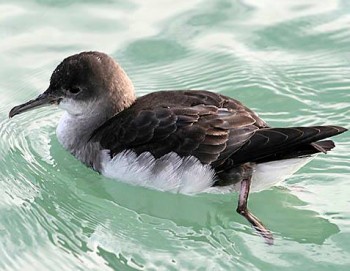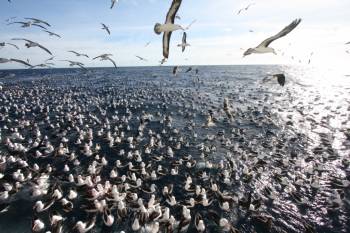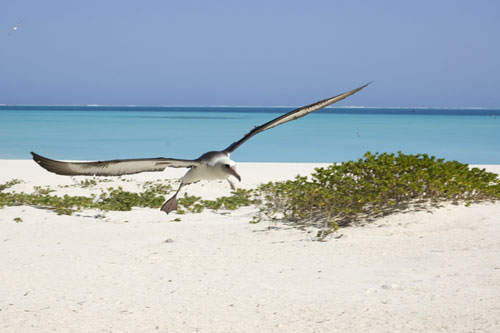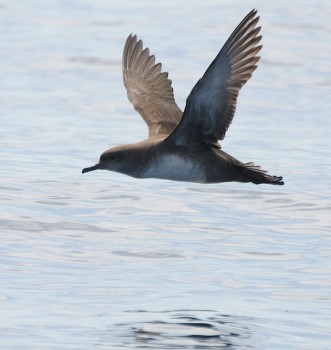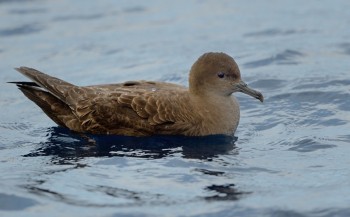The following text come from the Hutton's Shearwater Charitable Trust of Kaikoura, New Zealand.
“The nationally endangered Hutton's shearwater (Puffinus huttoni) is the only seabird globally to breed in a sub-alpine environment, with the only two breeding colonies remaining in the Seaward Kaikoura Range in the South Island.
From an estimated population numbering millions of birds, introduced mammals and changes in land use have decreased the Hutton’s shearwater population to less than half a million. There is an estimated breeding population of more than 100,000 pairs, with a similar number of non-breeding birds visiting colonies early in the breeding season. Despite this relatively high number the species is regarded as nationally endangered because of past declines (evident from extinct colonies) and the threats still faced.
The Hutton's shearwater was long known to Māori, providing a major sustainable source of protein to Ngāti Kuri. Chicks were harvested from their burrows shortly before fledging and preserved in pōhā/kelp bags. The Hutton’s shearwater was first officially described in 1912, and later there were anecdotal reports from high country farmers, hunters and various others of 'muttonbird' burrows at high elevations in the Seaward Kaikoura Range, behind Kaikoura. In 1965, following on from these leads, Geoff Harrow found carcasses in the headwaters of the Kowhai River at altitudes between 1,200 and 1,800 m above sea level, that were confirmed as Hutton's shearwaters.
Extensive searching led to the confirmation of eight colonies, but only two remnant colonies remain today. At least ten colonies formerly existed in both the Seaward Kaikoura and Inland Kaikoura Ranges; there is questionable evidence that the species may have bred beyond these mountains.
Habitat loss and predation by introduced mammals is the main threat to remaining Hutton’s shearwater populations. Feral pigs are considered a major threat, being responsible for the loss of colonies in the last 100 years. Deer and chamois are known to trample nesting burrows, while stoats and cats will eat young birds and eggs. Both of the remaining breeding colonies are confined to a small area, making the birds extremely vulnerable to events such as landslides or predation which could lead to extinction.
A third colony (Te Rae o Atiu) was established on the Kaikoura Peninsula in 2005, to ensure long-term survival. This was a joint project by Te Runanga o Kaikoura, Whale Watch Kaikoura, Department of Conservation, and Forest & Bird, with support from the local community. A predator-proof fence was then constructed by the Hutton’s Shearwater Charitable Trust in 2010. Multiple translocations occurred, with chicks transferred from mountain burrows to artificial burrows at the new colony. Volunteers hand fed chicks for a 2-3 week period, until they fledged. During this time the chicks ‘imprinted’ on the site, ensuring they would return to the new colony to breed. Chicks raised there are already returning and producing their own offspring.”
Read earlier accounts of Hutton’s Shearwaters in ACAP Latest News and visit the trust’s Facebook page.
Hutton's Shearwater at sea
John Cooper, ACAP Information Officer, 15 March 2016

 English
English  Français
Français  Español
Español 